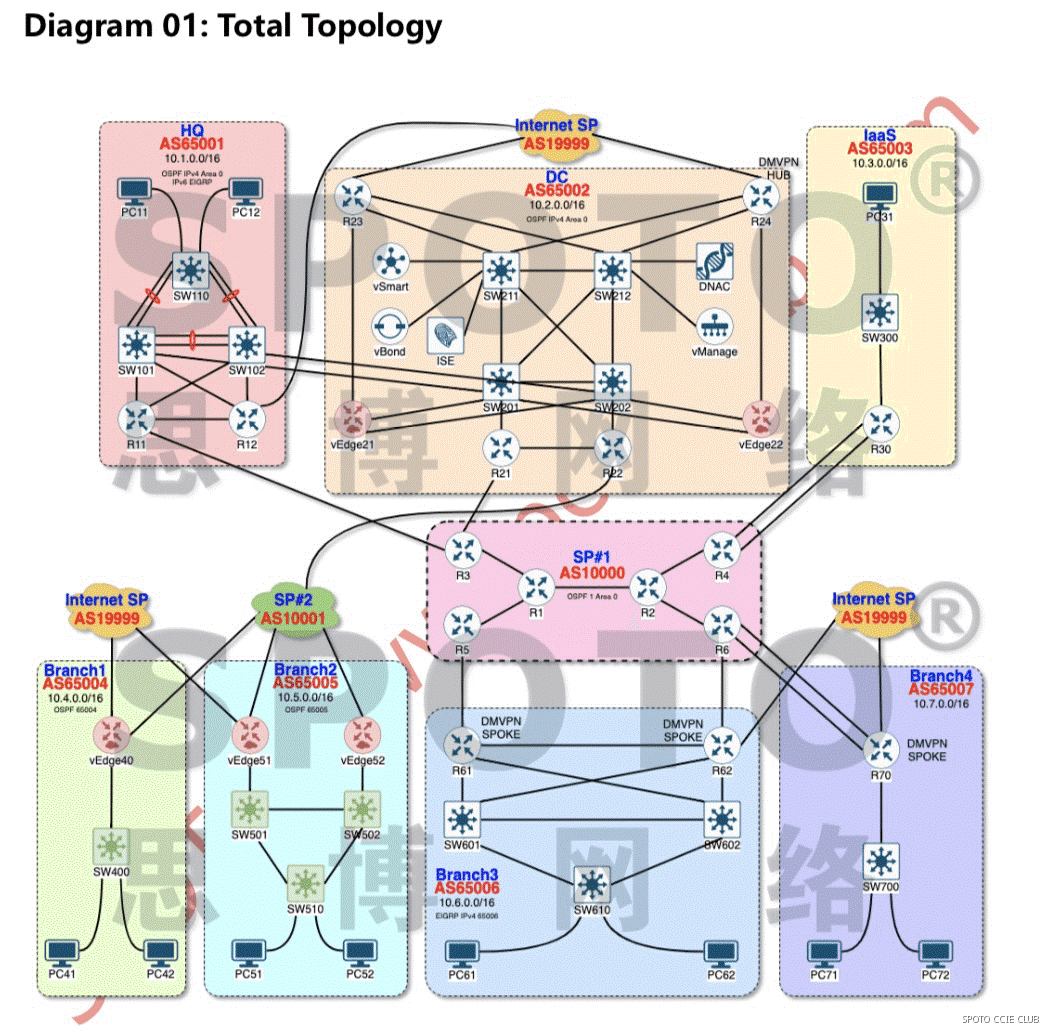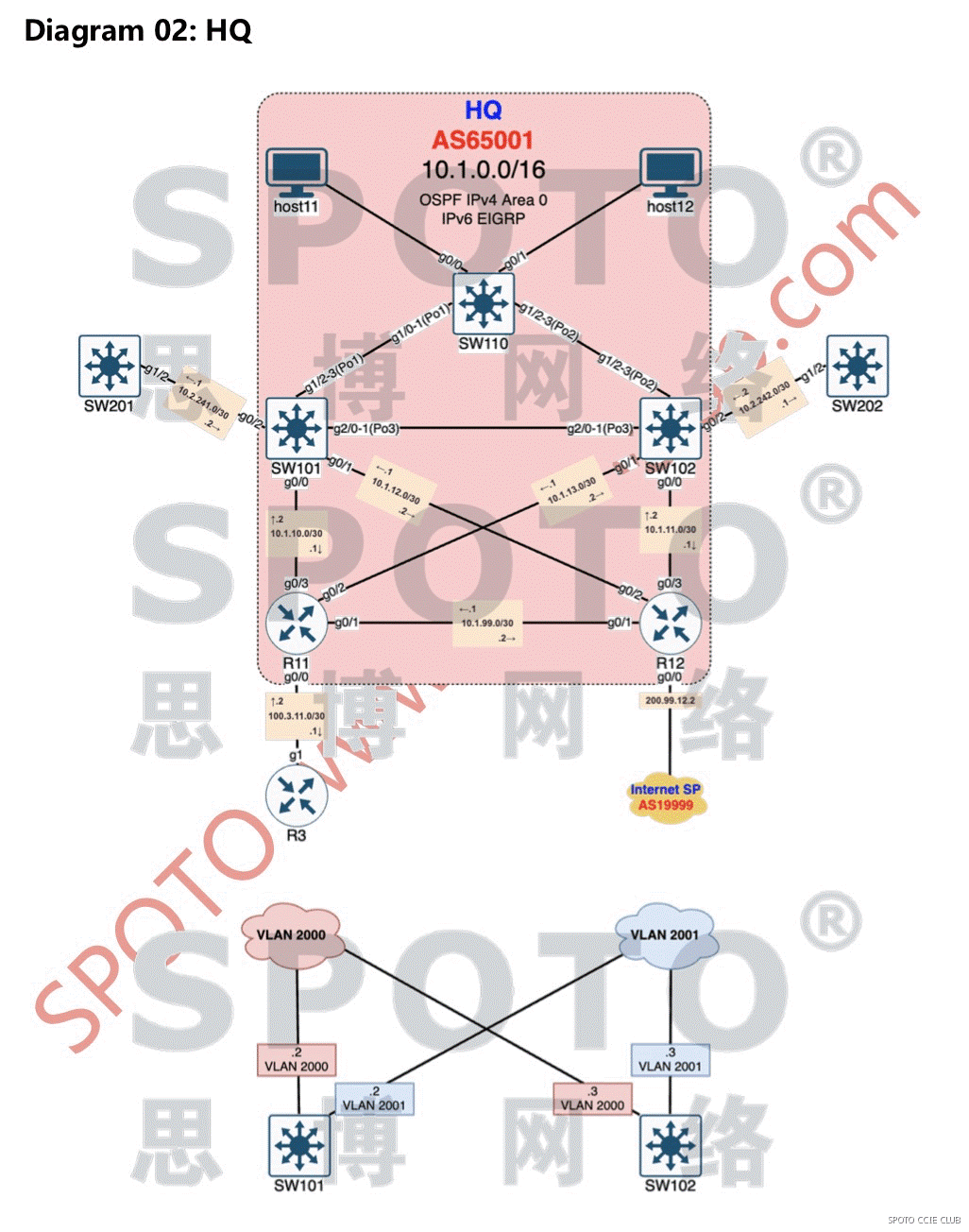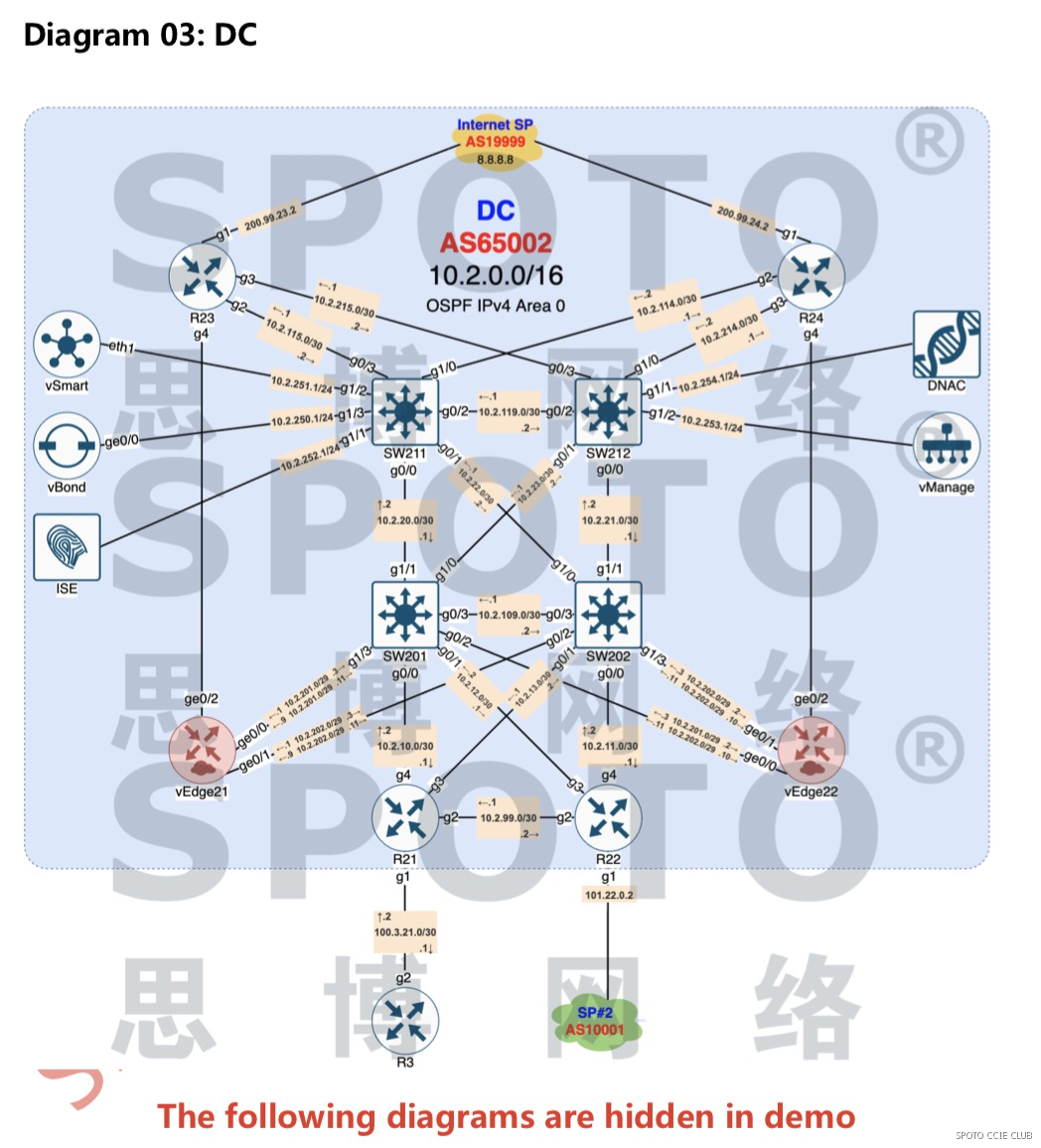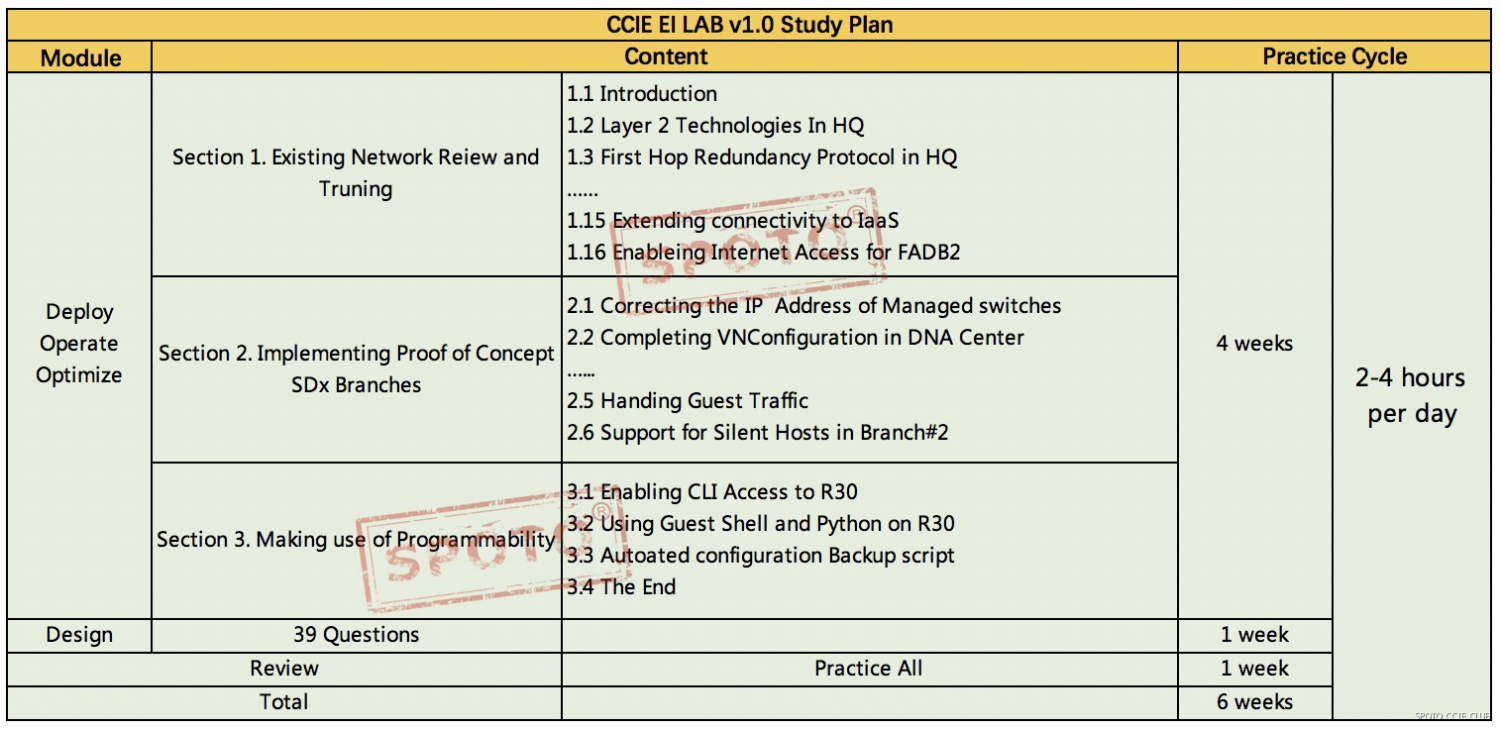 The CCIE Enterprise Infrastructure Lab Exam is a comprehensive, hands-on exam that tests a candidate's ability to plan, design, deploy, operate, and troubleshoot complex enterprise networks. It is part of the Cisco Certified Internetwork Expert (CCIE) Enterprise Infrastructure certification process, which is one of the most respected and sought-after certifications in the networking industry.
The CCIE Enterprise Infrastructure Lab Exam is a comprehensive, hands-on exam that tests a candidate's ability to plan, design, deploy, operate, and troubleshoot complex enterprise networks. It is part of the Cisco Certified Internetwork Expert (CCIE) Enterprise Infrastructure certification process, which is one of the most respected and sought-after certifications in the networking industry.The Cisco CCIE enterprise infrastructure (v1.0) lab exam is an eight-hour hands-on test that requires candidates to plan, design, deploy, operate and optimize dual-stack solutions (IPv4 and IPv6) for complex enterprise networks. SPOTO offers 100% real CCIE EI lab exam workbooks and solutions to help you better prepare for the lab exam! Cisco have implemented several changes in the CCNP and CCIE certification exams since February 24, 2020. In order to be certified, candidates would have to take the same core exam, and once they would have passed, they could proceed for taking the exam for their concentration or a focused area. CCIE candidates who would be choosing to concentrate on CCIE enterprise infrastructure must clear the CCIE enterprise infrastructure lab exam to obtain their badge. Before you could take the CCIE enterprise infrastructure lab exam, you are required to pass the core exam 350-401 exam first. For the written exam, SPOTO offers valid 350-401 exam dumps that would be covering all real exam questions. You could easily pass the exam and achieve the certification in just 7 days in general.
The CCIE Enterprise Infrastructure Lab Exam focuses on a wide range of topics related to enterprise networking, including:
1. Network Infrastructure: Implementing and troubleshooting Layer 2 and Layer 3 technologies, such as VLANs, Spanning Tree Protocol (STP), EtherChannel, OSPF, EIGRP, BGP, and multicast.
2. Transport Technologies and Solutions: Understanding and configuring technologies like MPLS, DMVPN, and IPsec VPNs.
3. Infrastructure Security and Services: Implementing and troubleshooting various security features, such as access control lists (ACLs), control plane policing (CoPP), and network infrastructure security.
4. Software-Defined Infrastructure: Working with Cisco Software-Defined Access (SD-Access) and Software-Defined WAN (SD-WAN) solutions, including their components, policies, and integration.
5. Automation and Programmability: Leveraging tools and technologies for network automation and programmability, such as Python, REST APIs, Ansible, and Cisco DNA Center.

This is the material content that you need to practice. You will face them when you take the exam.
Design: Design 1 Deploy & Operate & Optimize:LAB1 Pass Your CCIE Enterprise Infrastructure Lab Exam at the First Try with SPOTO CCIE Enterprise Infrastructure Lab dumps 100% Real Exam Questions and Answers We Offer Various Materials You to Prepare & Pass CCIE Enterprise Infrastructure Lab Exam. 100% Guarantee Passing Rate and Professional Tutors Team.- 100% Real Exam Practice Tests
- 100% Guarantee Passing Rate
- Professional Tutors Teams
- 100% Real Exam Environment
- Latest Passing Feedbacks
- 17 -Year IT Training Experienc
- Network Infrastructure
- Software Defined Infrastructure
- Transport Technologies and Solutions
- Infrastructure Security and Service
- Infrastructure Automation and Programmability
أحدث التقارير الناجحة من المرشحين
3 خطوات للحصول على الشهادة

اجتياز اختبار الشهادة التالي بسرعة
Chat Now






التقييمات التي قدمها الطلاب
5.0
تقييم الدورة
المراجعات
Chris
إضافة إلى استعراض